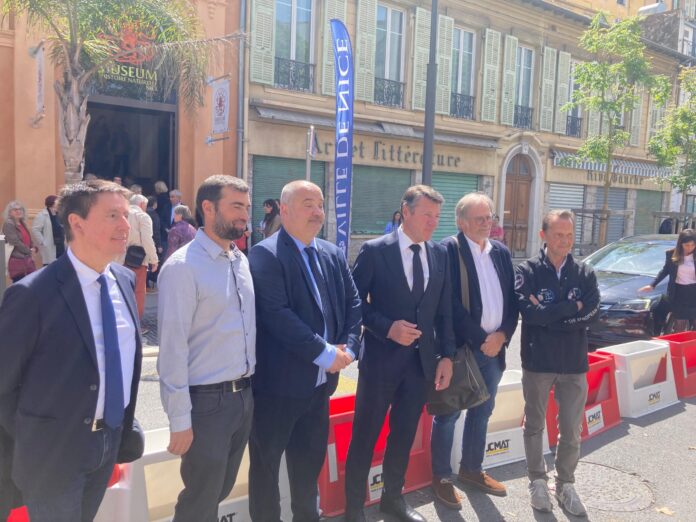
The Natural History Museum of Nice is undergoing a major transformation, blending respect for heritage with modernity. This article reveals behind the scenes of the rehabilitation and extension works, designed to offer a new experience to visitors. Through the voices of the project’s stakeholders, discover how this “sleeping beauty” is preparing to be reborn.
Nestled at 60 boulevard Risso, the Natural History Museum of Nice is the city’s oldest municipal museum, inaugurated in 1846. It was born out of the passion of two 19th-century Nice naturalists, Jean-Baptiste Barla and Jean-Baptiste Vérany, whose founding collections are now labeled ” Museum of France“. Over nearly two centuries, the institution has grown to include more than a million specimens, covering an exceptional diversity of animal, plant, mineral, and fossil species.
But the museum is not just about preserving the memory of life. It is also a player in contemporary research, collaborating with prestigious partners such as the National Museum of Natural History, the Oceanographic Institute of Monaco, and the Mercantour National Park. However, despite this scientific wealth, the site had remained, in recent years, on the fringes of current museographic standards. Until the City of Nice undertook a massive transformation project.
“A sleeping beauty we want to transform”
It is in 2023 that the renovation momentum begins, driven by Jean-Marc Giaume, deputy mayor for scientific culture, and Christian Estrosi, mayor of Nice. The latter enthusiastically states: “it is not stuck in the past since it has been gradually awakening since 2023 and it is a sleeping beauty we want to transform into a living place.“
The goal? To offer a new visiting experience, more immersive, more accessible, and fully rooted in contemporary issues. An ambitious project with a budget of 1,140,798 euros, which involves not only the rehabilitation of the facade but also a comprehensive reconfiguration of the interior spaces.

A redesigned journey: from the depths to the peaks
At the heart of this renewal, the new scenographic journey imagined by Didier Jeantrain promises to take visitors through the 13 most emblematic ecosystems of the Nice area. As Christian Estrosi summarized: “we are now going to launch an ambitious development of the spaces with a new scenographic journey that will allow the discovery of 13 Nice ecosystems.”
This journey, titled From the Abyss to the Peaks, will offer a thematic and sensory thread throughout the visit. The museum’s scientific director, Olivier Gerriet, explains: “We will also have access to an ecosystem room to present 13 specific ecosystems titled ‘from the abyss to the peaks’.” This immersive approach will strengthen the link between science and nature while highlighting local specificities.
A modernized museography
The museum also plans to considerably expand the number of visible specimens. “We are going to triple the number of exhibited specimens“, announces Olivier Gerriet. He insists on the intention to showcase the breadth of the collections: “we will reveal the hundreds of thousands of objects we conserve.”
The museum entrance will be marked by “the presence of the marine environment at the reception, with magnificent whale models“, notes the scientific director. A nod will also be given to the site’s history through “a curiosity cabinet to talk about the museum’s origin and history“. Among the other highlights of the visit, a large showcase will display remarkable fossils and rocks.

Accessibility, education, conviviality: a museum for everyone
To ensure this transformation benefits all audiences, the project includes a complete redesign of the reception area with a shop, changing rooms, and a reception desk. A reading space and a multipurpose room in the basement will enhance educational activities, especially for schools. “A mediation and reading space to strengthen educational activities“, as highlighted by Christian Estrosi.
Accessibility has also been placed at the center of concerns. The museum aims for total accessibility to all its spaces. Moreover, a 250 m² educational garden will be created within the Promenade du Paillon, extending the museum experience outdoors.
A mobile museum during the works
The renovation necessitates a temporary closure of the site, planned until the end of October 2025. But to maintain the connection with the public, the City of Nice has devised an original and playful alternative. “There will be a cargo bike touring the gardens of Nice on Wednesdays in May and June, and during the summer holidays to offer discovery workshops to children“, indicates Christian Estrosi. An initiative that demonstrates the commitment to not interrupt the museum’s mission of scientific transmission, even during the construction period.
A heritage and environmental ambition
Beyond the material developments, the transformation of the Natural History Museum is part of a broader ambition: to raise awareness about biodiversity and the environmental emergency. At a time when environmental issues are crucial, the Natural History Museum will be more than ever a place of awakening, transmission, and action.
Olivier Gerriet sums it up with emotion: “we are really happy that this place can find a new lease of life.”
The Natural History Museum of Nice, between prestigious past and committed future, is thus preparing for a reopening that will mark a new era for local scientific culture. A highly anticipated rebirth, promising to bring together heritage, science, and ecology in a vibrant, inspiring place resolutely looking to the future.